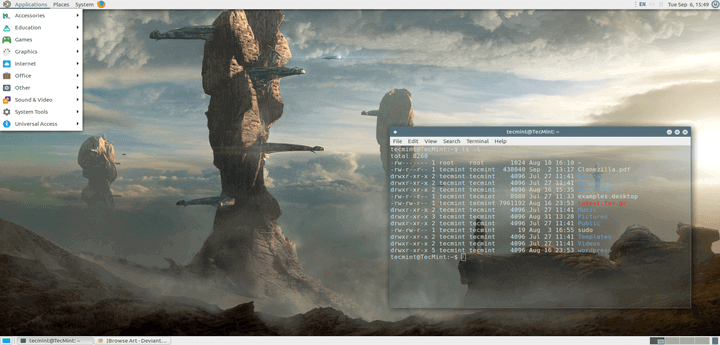Ubuntu Docker Commands
- Ubuntu 18.04 Docker Commands
- Ubuntu Docker Command Not Found
- Ubuntu Docker Command Line
- Ubuntu Docker Commands Command
- Ubuntu Docker Command Without Sudo
List of Docker Commands Manage Docker as a non-root User with sudo Command. By default, the Docker daemon binds to a UNIX socket (instead of a TCP port) which is owned by the user root. Therefore the Docker daemon always runs as the root user and to run the docker command, you need to use sudo. Besides, during the Docker package installation, a. Cockpit is included in Ubuntu 17.04 and later, and available as an official backport for 16.04 LTS and later. Backports are enabled by default, but if you customized apt sources you might need to enable them manually. Install the package.
For Linux Mint, this problem is actually referenced in the Docker website. Note: The lsbrelease -cs sub-command below returns the name of your Ubuntu distribution, such as xenial. There are two methods for installing Docker on Ubuntu 16.04. One method involves installing it on an existing installation of the operating system. The other involves spinning up a server with a tool called Docker Machine that auto-installs Docker on. Step 1) Install prerequisites packages for docker. Login to Ubuntu 20.04 /20.10 system and run the following apt commands to install docker dependencies, $ sudo apt update $ sudo apt install -y apt-transport-https ca-certificates curl gnupg-agent software-properties-common Step 2) Setup docker official repository.
If you already have Cockpit on your server, point your web browser to:https://ip-address-of-machine:9090
Use your system user account and password to log in. See the guide for more info.
Recommended client browsers
Cockpit is developed with and has automated tests for:
- Mozilla Firefox
- Google Chrome
Cockpit is also periodically checked with:
- Microsoft Edge
- Apple Safari
- GNOME Web (Epiphany)
Minimum client browser versions
The following browsers (and up) may also work with Cockpit:

- Mozilla Firefox 54
- Google Chrome 58
- Microsoft Edge 16
- Apple Safari 10.3
However, we strongly encourage you to use the latest version of your browser for security reasons.
Installation & Setup
| Supported | Tested | Included | |
|---|---|---|---|
| ✓ | ✓ | ✓ | View instructions |
| ✓ | ✓ | ✓ | View instructions |
| ✓ | ✓ | ✓ | View instructions |
| ✓ | ✓ | ✓ | View instructions |
| ✓ | ✓ | ✓ | View instructions |
| ✓ | ✓ | ✓ | View instructions |
| ✓ | ✓ | ✓ | View instructions |
| ✓ | View instructions | ||
| ✓ | View instructions | ||
| ✓ | View instructions |
Fedora
Cockpit comes installed by default in Fedora Server.
To install Cockpit on other variants of Fedora use the following commands. For the latest versions use COPR.
- Install cockpit:
- Enable cockpit:
- Open the firewall if necessary:
Red Hat Enterprise Linux
Ubuntu 18.04 Docker Commands
Cockpit is included in Red Hat Enterprise Linux 7 and later.
- On RHEL 7, enable the Extras repository.
RHEL 8 does not need any non-default repositories.
- Install cockpit:
- Enable cockpit:
- On RHEL 7, or if you use non-default zones on RHEL 8, open the firewall:
Fedora CoreOS
The standard Fedora CoreOS image does not contain Cockpit packages.
- Install Cockpit packages as overlay RPMs:
Depending on your configuration, you may want to use other extensions as well, such as
cockpit-kdumporcockpit-networkmanager.If you have a custom-built OSTree, simply include the same packages in your build.
Reboot
- Run the Cockpit web service with this privileged container (as root):
- Make Cockpit start on boot:
Steps 3 and 4 are optional if the CoreOS machine will only be connected to from another host running Cockpit.
Afterward, use a web browser to log into port 9090 on your host IP address as usual.
Project Atomic
Connect to an Atomic Host from another instance of Cockpit with the Add Server dashboard UI.
Alternatively you can access Cockpit directly on the Atomic Host if SSH password authentication is enabled:
- Run the Cockpit web service container:
CentOS
Cockpit is included in CentOS 7.x:
- Install cockpit:
- Enable cockpit:
- Open the firewall if necessary:
Debian
Cockpit is included in Debian unstable and in backports for 10 (Buster).
- For Debian 10 you have to enable the backports repository:
- Install the package:
When installing and updating Cockpit-related packages and any dependencies, make sure to use -t buster-backports so backports are included.
Ubuntu
Cockpit is included in Ubuntu 17.04 and later, and available as an official backport for 16.04 LTS and later. Backports are enabled by default, but if you customized apt sources you might need to enable them manually.
Install the package:
Clear Linux
Ubuntu Docker Command Not Found
Cockpit is in Clear Linux OS and can be installed using swupd:
Arch Linux
Cockpit is included in Arch Linux:
If the first command fails with “database file for … does not exist”, refresh/update your system with sudo pacman -Syu first.
Ubuntu Docker Command Line
openSUSE Tumbleweed
Ubuntu Docker Commands Command
Cockpit is included in openSUSE Tumbleweed:
Ubuntu Docker Command Without Sudo
- Install cockpit:
- Enable cockpit:
- Open the firewall if necessary:
